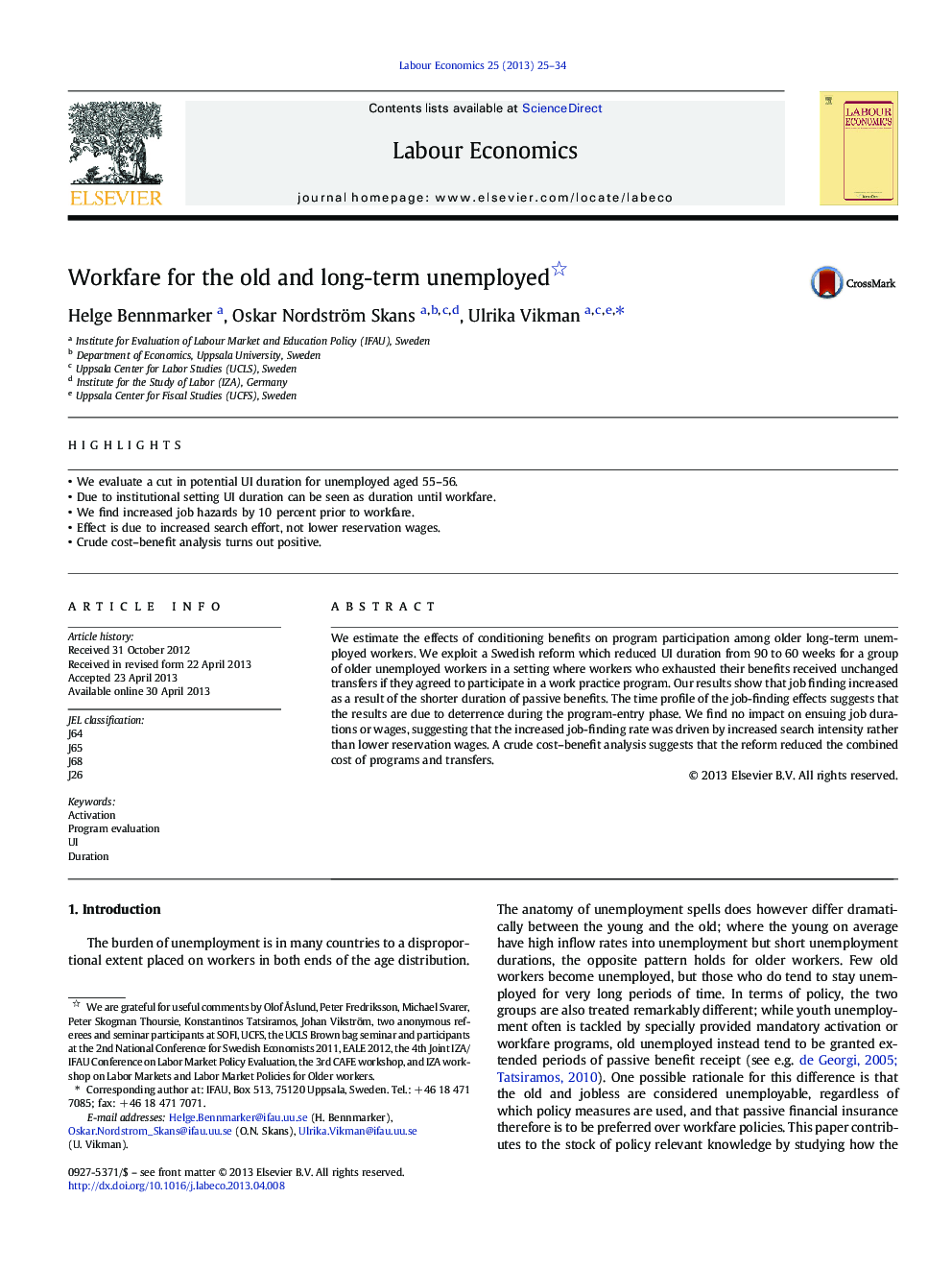| Article ID | Journal | Published Year | Pages | File Type |
|---|---|---|---|---|
| 971487 | Labour Economics | 2013 | 10 Pages |
•We evaluate a cut in potential UI duration for unemployed aged 55–56.•Due to institutional setting UI duration can be seen as duration until workfare.•We find increased job hazards by 10 percent prior to workfare.•Effect is due to increased search effort, not lower reservation wages.•Crude cost–benefit analysis turns out positive.
We estimate the effects of conditioning benefits on program participation among older long-term unemployed workers. We exploit a Swedish reform which reduced UI duration from 90 to 60 weeks for a group of older unemployed workers in a setting where workers who exhausted their benefits received unchanged transfers if they agreed to participate in a work practice program. Our results show that job finding increased as a result of the shorter duration of passive benefits. The time profile of the job-finding effects suggests that the results are due to deterrence during the program-entry phase. We find no impact on ensuing job durations or wages, suggesting that the increased job-finding rate was driven by increased search intensity rather than lower reservation wages. A crude cost–benefit analysis suggests that the reform reduced the combined cost of programs and transfers.
